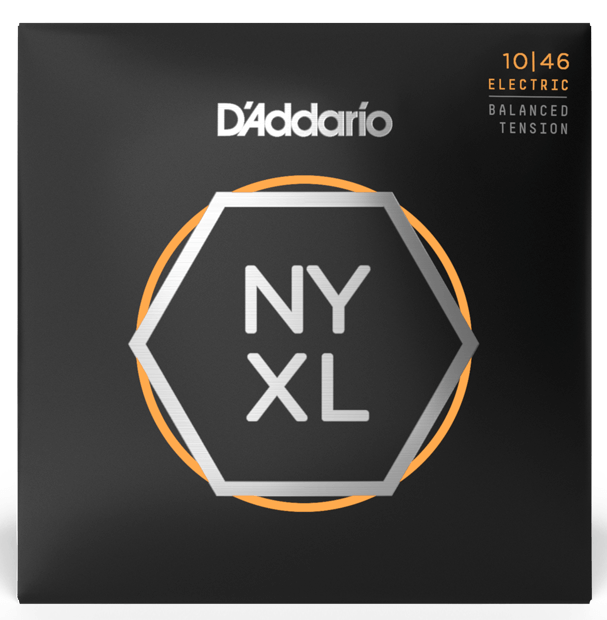What Does Balanced Tension Mean?

When I first heard Dan Steinhardt of That Pedal Show talk about his use of balanced tension strings, I became curious. To my science trained mind, it sounded like it meant that each string would exercise the same amount of tension on the guitar regardless of string gauge.
When I started looking at tension charts, when the makers published them at all, it became clear to me that most string sets, including ones that I liked and even preferred, did not have this balanced tension thing happening, so I started doing some research.
I found articles that were qualitative but not quantitative and I wanted to see numbers and science to stand up the claims, and I also wanted to purchase a set of balanced tension strings to see if they felt different or sounded different to me.
I ordered a set of D'Addario NYXL Balanced Tension strings in their 11-50 set. I had to go through Amazon, because none of my local shops stocked balanced tension strings, thus my first learning was that this was not something in particularly high demand.
I had to restring my old PRS CE22 as I decided to use it for some upcoming lessons that I signed up for. As happens, the strings on it were old but still sounded fine, a tribute to that last batch of PRS branded strings that I had used.
But, I had a scientific experiment to perform! First step was to find the documentation on how to best use the very old style PRS winged locking tuners. Lots of gripes and YouTube vids, but PRS does an excellent job of maintaining support documents and I found the official instructions on one page quickly. Suffice to say, that they were all I needed and I was reminded once again of how awesome those PRS winged locking tuners are.

Opening the package revealed, surprise!, guitar strings in a sealed pouch wound in pairs, just like every other D'Addario package I have opened in the last little while. The strings did not feel any different when mounting them to the guitar. They tuned up quickly and after a couple of stretches, have held their tune very well. Whether this is the nature of the NYXL build, or a combination of that and the locking tuners, I cannot tell. It's good enough to know that the string change was fast and easy and that the new strings once stretched are holding tune well.
The strings do feel different. Not in terms of slipperiness but more in terms of bending. The G, B and E strings require about the same amount of effort to bend, which is different from my experience with non-balanced tension strings. I suspect that with practice, that this might mean that bends will be more consistent. The bending of the E, A, and D strings were also very similar but heavier than the high strings as one might expect. My common high E is a .010 and for this set I went to an .011, again based on the opinion of Dan Steinhardt, who was using the 11 - 50 set on his red Telecaster some months back. It does make the E a bit tougher to bend, but as my intent for the lessons is to learn more jazz chording and chord inversions, I thought it might be worthwhile to give the nominally heavier string a try.
I found a video from a custom string maker called StringJoy out of Nashville. The video presenter offered a spreadsheet for download that allows you to enter some information such as scale length and string gauge that uses mathematics calculate the string tension, which could be handy if the maker does not provide this information. It also makes some assumptions about string weight, which is going to differ from maker to maker based on string construction, so I am going to call it close but not exact, except for StringJoy's own strings, which I admittedly have not tried. Their online web calculator is at https://tension.stringjoy.com
D'Addario offers a web based application that allows you to see how you could achieve balanced tension based on your own entries or starting with one of their existing packages at http://stringtensionpro.com It's interesting, but I missed how one could order a set resulting from the app.
As some of you know, I have been moving to Curt Mangan strings recently. That company does not have an interactive tool but does produce a string tension chart that is very usable. What I liked about these folks is the ability to build your own custom set very easily and to add your name and even a logo directly to the package.
In building packages for electrics, I used the PRS scale length and built a set of Curt Mangan strings based on the Monel construction with gauges, 10, 13.5, 17, 26, 36, 48. For my acoustics, I again used the Monel construction with gauges 11.5, 15.5, 20, 30, 42, 56 I admit to be really taken with the Monel acoustic tones and recently put a set of Curt Mangan Monel strings on my '57 Black Beauty and am really pleased with the tone. This Les Paul is very heavy and I think that the 10-46 standard Monel strings are good on it because it can be a bit boomy because of the excess weight, as it is nearly a 12 pound guitar.

Hopefully this short explanation of what balanced tension is and why you might be inclined to give balanced tension strings a try has been interesting to you.
Play on!

